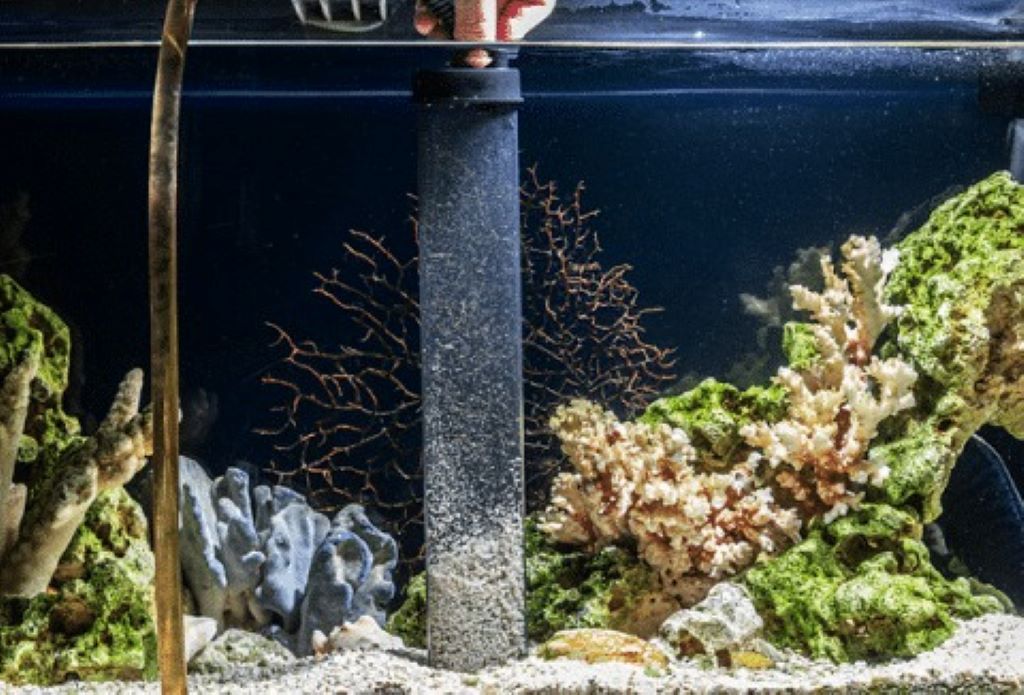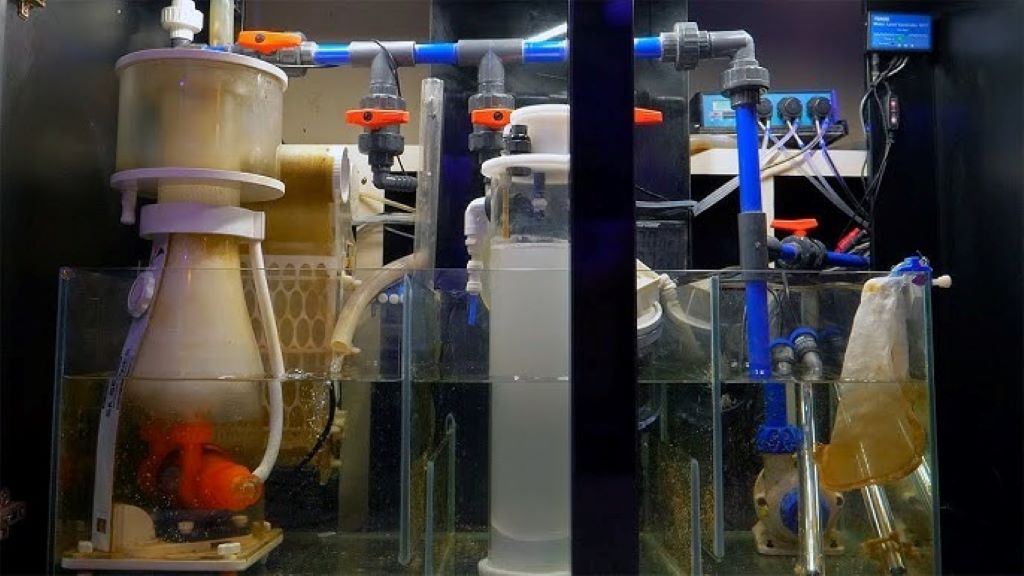Maintaining a pristine reef tank environment is crucial for the health and vitality of its inhabitants. The sump, often hidden away in the cabinet below, plays a critical role in this ecosystem. It acts as the central hub for filtration, protein skimming, and other essential processes that keep your reef tank thriving. However, like any part of your aquarium, the sump requires regular cleaning to function optimally. Cleaning a reef tank sump ensures that these vital processes continue without interruption, supporting the overall well-being of your marine life.
In this comprehensive guide, we will delve into the intricacies of cleaning a reef tank sump efficiently. We’ll explore the benefits, potential drawbacks, step-by-step procedures, and answer some frequently asked questions to equip you with the knowledge and confidence to tackle this essential maintenance task.
Understanding the Sump’s Role in Reef Tank Ecosystems
Before we dive into the cleaning process, let’s take a moment to appreciate the vital role the sump plays in maintaining a healthy reef tank environment. Think of it as the behind-the-scenes engine room of your underwater world.
The sump provides a dedicated space for various equipment and filtration media, keeping the main display tank free from clutter and enhancing its aesthetic appeal. It also increases the overall water volume in your system, providing a more stable environment for your marine life.
Here are some key functions of a reef tank sump:
- Filtration: The sump houses mechanical, chemical, and biological filtration components. Mechanical filters remove particulate matter, chemical filters absorb dissolved impurities, and biological filters cultivate beneficial bacteria that break down harmful substances.
- Protein Skimming: Protein skimmers remove organic waste before it breaks down and pollutes the water, improving water quality and clarity.
- Heater and Chiller Placement: The sump provides a convenient location for heaters and chillers, maintaining a stable water temperature for your delicate reef inhabitants.
- Refugium: Many sumps incorporate a refugium, a dedicated space for macroalgae or other organisms that help consume excess nutrients and contribute to a balanced ecosystem.
Pros and Cons of Cleaning a Reef Tank Sump
Cleaning your reef tank sump offers numerous benefits, but it’s essential to be aware of potential drawbacks to ensure you approach this task with caution and care.
Pros:
- Improved Water Quality: Removing accumulated detritus, uneaten food, and other organic waste prevents the buildup of harmful toxins and maintains optimal water conditions for your reef inhabitants.
- Enhanced Filtration Efficiency: Cleaning filter media, such as filter socks and sponges, ensures they function effectively, maximizing their ability to remove impurities from the water.
- Reduced Algae Growth: Regular sump cleaning helps control nutrient levels, minimizing the risk of unsightly algae outbreaks that can smother corals and disrupt the delicate balance of your reef ecosystem.
- Extended Equipment Lifespan: Cleaning pumps, skimmers, and other equipment prevents the buildup of debris that can hinder their performance and shorten their lifespan.
- Early Problem Detection: Regular sump inspections allow you to identify potential issues, such as leaks, equipment malfunctions, or unusual livestock behavior, before they escalate into major problems.
Cons:
- Disruption to the Ecosystem: Cleaning the sump can temporarily disrupt the biological filtration process, potentially causing fluctuations in water parameters.
- Stress to Livestock: The cleaning process can introduce stress to your fish, corals, and other invertebrates, especially if not performed carefully and efficiently.
- Risk of Contamination: If not cleaned properly, the sump can become a source of contamination, introducing harmful bacteria or pathogens into your reef tank.
- Time Commitment: Cleaning the sump can be a time-consuming task, especially for larger or more complex systems.
Step-by-Step Guide to Cleaning a Reef Tank Sump

Now that you understand the importance of sump cleaning and the potential pros and cons involved, let’s break down the process into manageable steps:
-
Gather Your Supplies:
Before you begin, ensure you have all the necessary tools and equipment on hand:
- Gloves: Protect your hands from potentially harmful bacteria and chemicals.
- Buckets: Use separate buckets for clean and dirty water.
- Siphon Hose: For removing water and detritus from the sump.
- Cleaning Brushes: For scrubbing pumps, skimmers, and other equipment.
- Filter Media: Replacements for filter socks, sponges, or other media as needed.
- Towels: For drying equipment and cleaning up spills.
- Dechlorinated Water: For topping off the sump after cleaning.
-
Turn Off Equipment:
For safety and to prevent damage to your equipment, turn off all pumps, skimmers, heaters, and other electrical components in the sump before you begin cleaning.
-
Remove and Clean Filter Socks:
Filter socks are the first line of defense in mechanical filtration, trapping large particulate matter. Remove the filter sock and rinse it thoroughly with clean, dechlorinated water. If it’s heavily soiled or damaged, replace it with a new one.
-
Siphon Detritus:
Use the siphon hose to remove accumulated detritus, uneaten food, and other organic waste from the bottom of the sump. Be careful not to disturb any live rock or sand in the refugium, as this can release unwanted nutrients into the water.
-
Clean Pumps and Skimmers:
Disassemble pumps and skimmers according to the manufacturer’s instructions and clean them with brushes and dechlorinated water. Pay attention to impellers, volute chambers, and other areas where debris can accumulate.
-
Clean Other Equipment:
Clean any other equipment in the sump, such as heaters, reactors, or probes, using appropriate cleaning methods. Avoid using harsh chemicals or abrasive cleaners that can damage equipment or leach harmful substances into the water.
-
Replace Filter Media:
If necessary, replace any other filter media, such as sponges or activated carbon, according to the manufacturer’s recommendations.
-
Reassemble and Restart Equipment:
Once all equipment is clean and dry, reassemble it carefully and restart it in the correct order. Ensure all connections are secure and there are no leaks.
- Top Off Water:
After cleaning, top off the sump with dechlorinated water to replace any water lost during the cleaning process.
-
Monitor Water Parameters:
After cleaning, monitor your water parameters closely for any fluctuations. If necessary, make adjustments to maintain optimal conditions for your reef inhabitants.
Reviews of Popular Sump Cleaning Tools and Equipment
To help you choose the right tools for the job, here are some reviews of popular sump cleaning equipment:
- Python No Spill Clean and Fill: This versatile tool simplifies water changes and sump cleaning, allowing you to drain and refill the sump without the need for buckets or siphoning.
- Tunze Care Magnet Long: This powerful magnet cleaner makes it easy to clean algae and debris from the inside of the sump without getting your hands wet.
- Fluval FX4 Canister Filter: This high-performance canister filter offers excellent mechanical, chemical, and biological filtration, reducing the frequency of sump cleaning.
Aquarium Cleaning for Beginners: A Step-by-Step Guide, Pros and Cons, Reviews, and FAQs
Popular FAQs about Cleaning a Reef Tank Sump
-
How often should I clean my reef tank sump?
The frequency of sump cleaning depends on various factors, such as the size of your tank, the bioload, and the type of filtration you use. As a general rule, it’s recommended to clean your sump every 1-3 months.
-
Can I use tap water to clean my sump?
No, tap water contains chlorine and other chemicals that can be harmful to your reef inhabitants. Always use dechlorinated water for cleaning and topping off your sump.
-
Should I clean the refugium in my sump?
The refugium is a delicate ecosystem that benefits from minimal disturbance. Avoid excessive cleaning or removal of live rock or sand from the refugium.
-
How can I reduce the frequency of sump cleaning?
Regular maintenance, such as water changes, protein skimming, and filter media replacement, can help reduce the buildup of debris in the sump, minimizing the need for frequent cleaning.
-
What should I do if I notice a problem while cleaning my sump?
If you encounter any issues, such as leaks, equipment malfunctions, or unusual livestock behavior, stop cleaning immediately and consult with a qualified aquarium professional for assistance.
Conclusion
Cleaning your reef tank sump is an essential maintenance task that contributes to the overall health and well-being of your underwater world. By understanding the sump’s role, the pros and cons of cleaning, and following a step-by-step approach, you can confidently tackle this task and ensure your reef tank thrives for years to come. Remember to choose the right tools, be patient, and prioritize the well-being of your delicate reef inhabitants throughout the process.
Read More:
Water Changes: Keeping Your Reef Tank Sparkling!




